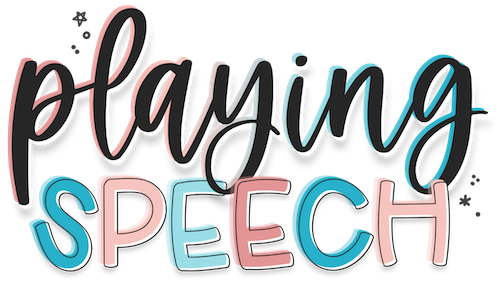Why You Need to Supplement a Speech Sound Assessment
WHY I SUPPLEMENT A FORMAL SPEECH SOUND ASSESSMENT
I recently got the Arizona-4 test for speech sound disorders. I have to say, as far as a standardized test of speech sounds go, I am pretty fond of it. It’s quick and easy to administer and it provides some good information regarding individual speech sounds, sounds in sentences, and phonological patterns!
And while I think it’s awesome to get normative data and a standardized score, I’ve also come to realize that a standardized test is not enough when it comes to assessing speech sound disorders.
I am always looking to supplement my standardized assessment with a few additional tasks to really analyze a child’s speech system. Keep reading to see the other areas I like to address when doing a speech sound assessment for preschool or school-age children!
WHAT ELSE DO I INCLUDE IN A SPEECH SOUND ASSESSMENT?
A more in-depth look at consonant clusters
So, many standardized tests DO look at some consonant clusters. But I don’t think they do a thorough enough job. I like to look at all S, R, and L clusters. I also like to look at 3 element clusters. I do this because it helps me start to plan treatment. Sometimes I will be using clusters as a primary target, and gathering baseline info on how a child produces these clusters helps determine where to start in therapy. I might use clusters to help me determine what approach might be appropriate for the child. I can see if the child demonstrates the consistent phonological process of cluster reduction, or if the child substitutes a phoneme consistently in a cluster. Sometimes, a child will only demonstrate cluster reduction on certain clusters (e.g. S clusters) and not others! All this information is valuable when making clinical decisions regarding how to treat a speech sound disorder.
A connected speech sample
I always want to get a connected speech sample. The Arizona-4 has a Words in Sentences subtest, but even this isn’t enough. I want to really get the kid talking to see how his speech sounds when he is in full on conversation mode. I try to bring up a topic of high interest to get kids talking. Or I use silly pictures scenes with absurdities. Kids really love these and love pointing out what is “wrong” in every picture. I also have sound loaded picture scenes that I included in my informal speech sound assessment. This is so that I can get a connected sample that I know will contain sounds I am specifically looking to hear and analyze further!
A stimulability check
I ALWAYS, ALWAYS, ALWAYS check to see what sounds the child is stimulable for. This is important for treatment planning. Depending on the approach you choose, sometimes you will want to target stimulable sounds (e.g. like when you are using the Cycles Approach), and sometimes you will want to choose non-stimulable sounds (like when you are using a complexity target selection approach). Additionally, it’s good to know what sounds are easier for the child to produce with help and which are harder. This can help determine prognosis!
Multisyllabic words
So again, a lot of standardized tests have multisyllabic words in them, but not as many as I would like. They don’t always break down the stimuli by syllable shape either. I like to see where in the hierarchy the child’s speech starts to fall apart. This is even more important if you suspect a child has Childhood Apraxia of Speech!
Diadochokinetic rates or DDK rates
I don’t always look at this. But I do specifically when I am suspecting Childhood Apraxia of Speech. That’s because DDK rates can help us make a differential diagnosis. Children with apraxia will usually take longer than normal to produce the sounds. They may also be more inconsistent when making these sounds. Here are some links to articles with norms for different age groups in case you are wondering what they are:
DDK NORMS FOR ages 2:6-6:11
DDK NORMS FOR ages 6-13
Supplementing a standardized speech sound assessment
So, that’s it. Those are the different tasks I like to include when supplementing a standardized assessment of speech sounds. I like to gather as much information as possible so that I can really analyze the child’s speech sound errors and plan the most appropriate treatment.
To help me do that, I created my own informal speech sound assessment that includes everything I want to look at when assessing a child’s speech. It has four separate and QUICK screeners that give you a more indepth look at consonant clusters, vocalic R, multisyllabic words, vowels, singletons in all positions of words, and common phonological patterns. I also included those silly sound loaded picture scenes I talked about that really help me get a connected speech sample!
I will link it here if you want to check it out!
As always, feel free to reach out with any questions or comments!
“Fantastic, well thought out screener. Love how easy it is to navigate or to just focus on a particular area if needed.”







